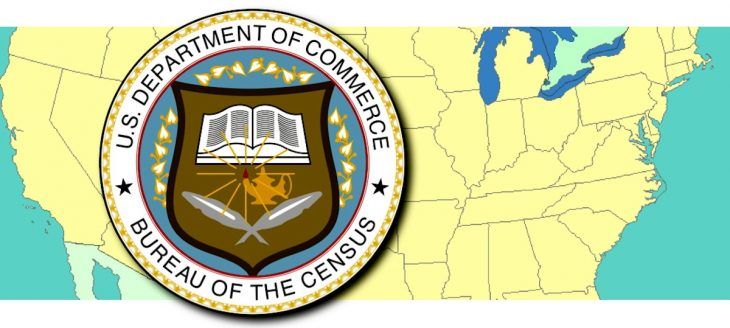U.S. Census Bureau: Conway state’s fastest-growing city in 2022
by May 18, 2023 7:57 am 2,600 views

Conway grew the quickest among the largest Arkansas cities in 2022, while Northwest Arkansas remained the state’s fastest-growing metro, according to new data from the U.S. Census Bureau. Conway’s population rose by 2.5% in 2022, and the population of Northwest Arkansas increased by 2.4%.
On Thursday (May 18), the Census Bureau released population estimates as of July 1, 2022, that show the fastest-growing U.S. cities are largely in the South. The agency also released estimates for metro area population and county housing units. The population increased in about two-thirds of the 384 U.S. metros from 2021 to 2022. Meanwhile, the nation’s housing stock rose by 1.2%.
The state’s fastest-growing metro, Northwest Arkansas, or the Fayetteville-Springdale-Rogers metro, also was the state’s largest-gaining metro, adding 13,438 people from 2021 to 2022. Its population rose by 2.4% to 576,403 from 562,965. The Fort Smith metro grew by 0.7% to 247,072 from 245,456. The Jonesboro metro grew by 0.7% to 135,512 from 134,518. The Little Rock metro, the state’s most populous, grew by 0.8% to 757,615 from 751,937. The Villages, Fla., was the fastest-growing U.S. metro, with its population rising by 7.5%.
Alison Wright, data center division head for the Arkansas Economic Development Institute, said the metro area population changes in Arkansas were not surprising. She added that Northwest Arkansas was tied for the 24th-fastest growing U.S. metro and had the 30th-highest population gain in the nation. While the population rose in four Arkansas metros, it fell in the following four metro areas: Memphis–which includes West Memphis–Hot Springs, Pine Bluff and Texarkana.
Among cities with at least 50,000 people, Conway was the 63rd fastest-growing U.S. city, with its population rising by 2.5% to 67,617 in 2022 from 65,965 in 2021. Rogers was No. 81, growing by 2.2% to 72,999 from 71,436. Fayetteville, at No. 92, grew by 2% to 99,285 from 97,328. Bentonville, the state’s fastest-growing city in 2021, was No. 125, growing by 1.6% to 57,868 from 56,936. The population of Jonesboro, at No. 158, rose by 1.3% to 79,876 from 78,862. Ranked No. 289, Fort Smith grew by 0.5% to 89,992 from 89,557.
For the second consecutive year, Georgetown, Texas, was the fastest-growing U.S. city, growing by 14.4% to 86,507 from 75,620.
Including cities with fewer than 50,000 people, Tontitown again was the fastest-growing city in Arkansas. Its population rose by 16.7% to 6,529 from 5,595. Rounding out the top three fastest-growing cities in the state were Highfill (16.6%) and Farmington (13.9%). Their population rose to 2,187 and 9,336, respectively.
Little Rock, the state’s most populous city, remained the 118th most populous U.S. city in 2022. Rounding out the state’s top five are Fayetteville, No. 331; Fort Smith, No. 380; Springdale, No. 393; and Jonesboro, No. 450. New York is the most populous U.S. city, with 8.33 million people.
The United States had 143.78 million housing units in 2022. By region, the South had the most housing units at 56.34 million in 2022. In Arkansas, housing units rose by 1.1% to 1.39 million in 2022 from 1.38 million in 2021.
Comparing the top 100 U.S. counties with at least 5,000 housing units, Benton County had the 65th fastest housing unit growth in the United States and the quickest in the state from 2021 to 2022. Its housing units rose by 3.6% to 122,499 from 118,205. Wasatch County, Utah, had the quickest housing unit growth in the nation, rising by 7.7% to 16,263 from 15,097.
Wright explained that the increase in housing units shows where the population is rising. She also noted that the counties comprising the metro areas would be revised later this year as a result of the 2020 Census.
The following shows the population change of the largest Arkansas metros:
Fayetteville-Springdale-Rogers (Northwest Arkansas)
2000: 325,364
2010: 440,121
2020: 546,725
2022: 576,403
Fort Smith
2000: 225,061
2010: 248,208
2020: 244,310
2022: 247,072
Jonesboro
2000: 107,762
2010: 121,026
2020: 134,196
2022: 135,512
Little Rock-North Little Rock-Conway
2000: 610,518
2010: 699,757
2020: 748,031
2022: 757,615
The following shows the population change of the largest Arkansas cities:
Bentonville
2000: 19,730
2010: 35,301
2020: 54,164
2022: 57,868
Conway
2000: 43,167
2010: 58,908
2020: 64,134
2022: 67,617
Fayetteville
2000: 58,047
2010: 73,580
2020: 93,949
2022: 99,285
Fort Smith
2000: 80,268
2010: 86,209
2020: 89,142
2022: 89,992
Jonesboro
2000: 55,515
2010: 67,263
2020: 78,576
2022: 79,876
Little Rock
2000: 183,133
2010: 193,524
2020: 202,591
2022: 202,864
North Little Rock
2000: 60,433
2010: 62,304
2020: 64,591
2022: 64,627
Rogers
2000: 38,829
2010: 55,964
2020: 69,908
2022: 72,999
Springdale
2000: 45,798
2010: 69,797
2020: 84,161
2022: 87,672
The following shows the change in housing units in the largest Arkansas counties:
Benton
2000: 64,281
2010: 93,084
2020: 113,088
2022: 122,499
Craighead
2000: 35,133
2010: 40,515
2020: 46,739
2022: 48,938
Faulkner
2000: 34,546
2010: 46,612
2020: 51,685
2022: 53,707
Garland
2000: 44,953
2010: 50,548
2020: 52,326
2022: 52,899
Pulaski
2000: 161,135
2010: 175,555
2020: 190,511
2022: 193,670
Saline
2000: 33,825
2010: 44,811
2020: 51,879
2022: 53,044
Sebastian
2000: 49,311
2010: 54,651
2020: 56,749
2022: 57,481
Washington
2000: 64,330
2010: 87,808
2020: 100,508
2022: 105,701
Note: The 2000, 2010 and 2020 numbers are from the decennial census data, provided by AEDI. The 2022 numbers are Census Bureau estimates that account for geographic changes such as annexation.
